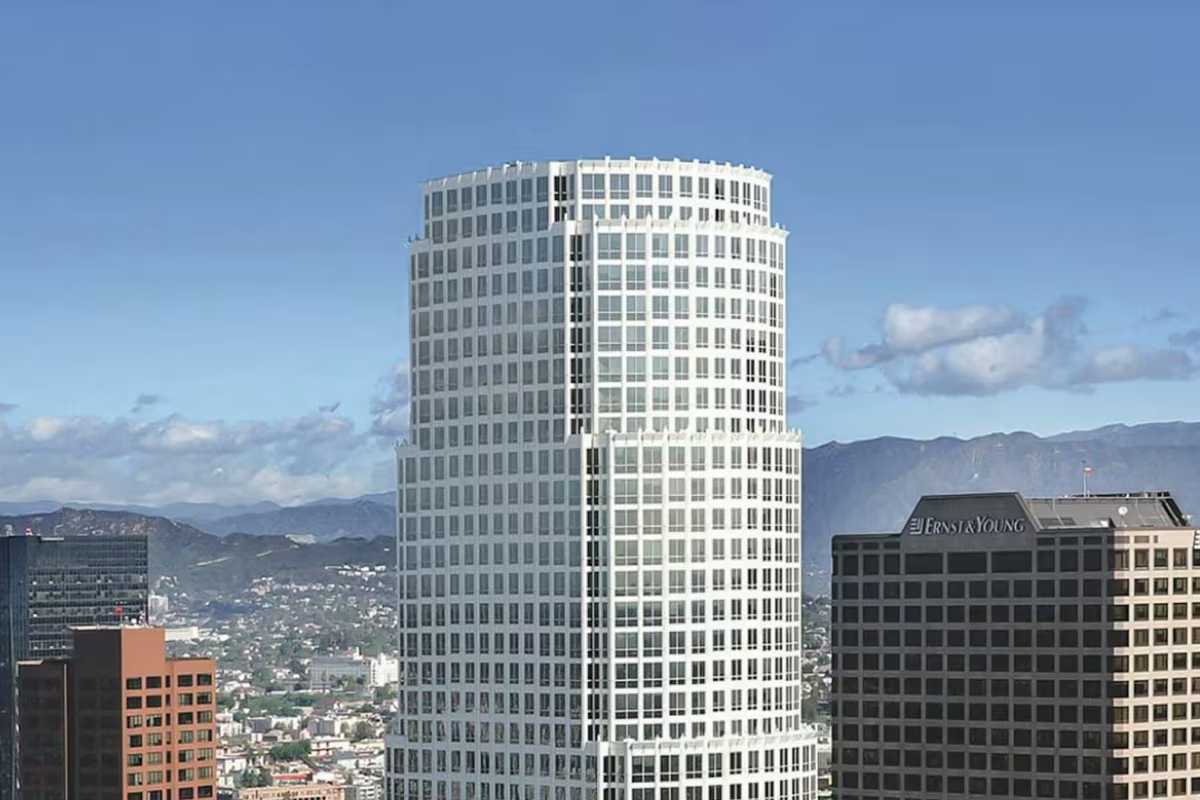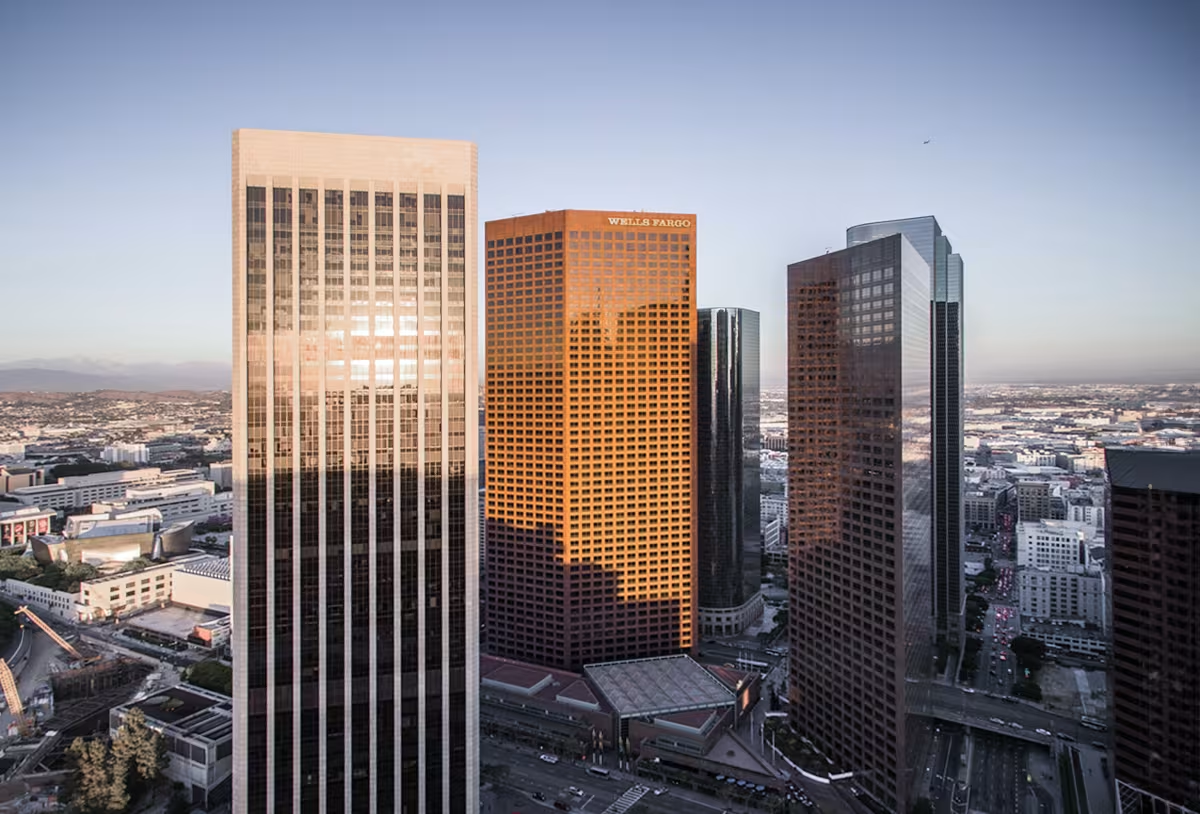777 Tower vs Wells Fargo Tower


Comparing the 777 Tower and the Wells Fargo Tower is interesting because they both rise in Los Angeles, CA, yet they were conceived by two different design teams, César Pelli & Associates and Skidmore, Owings & Merrill, and were completed at different points in time. They were finished more than 8 years apart.
This contrast within the same city allows us to see how different creative minds interpreted the evolving needs of Los Angeles across time.
Let's take a closer look!
Height & Size
These two towers present an interesting contrast in their proportions. The 777 Tower rises higher at 725ft (221m), while the Wells Fargo Tower reaches 722ft (220m). However, the Wells Fargo Tower accommodates more floors with 54 levels above ground, compared to 53 floors in the 777 Tower.
This suggests different approaches to interior space design. The 777 Tower has an average floor-to-floor height of approximately 4.2m, while the Wells Fargo Tower has more compact floors averaging around 4.1m each.
These different proportions likely reflect the specific needs each building was designed to serve, whether driven by zoning regulations, client requirements, or the intended use of the spaces within. The contrast shows how architects can achieve different spatial experiences even when working with similar overall building scales.
Architectural Style
Both the 777 Tower and the Wells Fargo Tower were designed in line with the aesthetic conventions of the Postmodernism style.
The 777 Tower was designed at a moment when the Postmodernism style was already in decline, making it more of a lingering expression of the movement. In contrast, the Wells Fargo Tower style was already in decline, making it more of a lingering expression of the movement. In contrast, the Wells Fargo Tower was built when the style still carried greater cultural weight.
Uses
Both the 777 Tower and the Wells Fargo Tower were designed to serve as commercial towers, and that has remained their main use since their completion, serving similar roles in the urban fabric.
Structure & Facade
The two towers rely on different structural systems, reflecting distinct engineering strategies.
The 777 Tower uses a Framed Tube In Tube structural system, which combines a strong central core with a perimeter tube of columns, while the Wells Fargo Tower uses a Frame system, that relies on a regular grid of columns and beams to sustain its weight.
Yet, when it comes to their facade, they both employed the same solution, a Curtain Wall facade.
A curtain wall is a non-load-bearing facade hung from the structural frame. It is anchored to floor slabs and transfers only its own weight and wind loads, allowing for sleek, glassy exteriors.
| 777 Tower | Wells Fargo Tower | |
|---|---|---|
| César Pelli & Associates | Architect | Skidmore, Owings & Merrill |
| 1988 | Construction Started | 1981 |
| 1991 | Year Completed | 1983 |
| Postmodernism | Architectural Style | Postmodernism |
| Commercial | Current Use | Commercial |
| 53 | Floors Above Ground | 54 |
| 221 m | Height (m) | 220 m |
| 102192 | Built-up Area (m²) | 129200 |
| 32 | Number of Elevators | 29 |
| Framed Tube In Tube | Structure Type | Frame |
| Steel | Vertical Structure Material | Steel |
| Concrete, Steel | Horizontal Structure Material | Concrete |
| Yes | Facade Structural? | Yes |
| Glass, Steel | Main Facade Material | Reddish Brown Granite, Glass |
| Jones & Jones | Main Contractor | Turner Construction Company |
| South Figueroa Plaza Associates | Developer | Thomas Properties Group |
| John A. Martin Associates | Structural Engineer | Skidmore, Owings & Merrill |
| CA | State | CA |
| Los Angeles | City | Los Angeles |
| 777 South Figueroa Street | Address | 333 S. Grand Avenue |